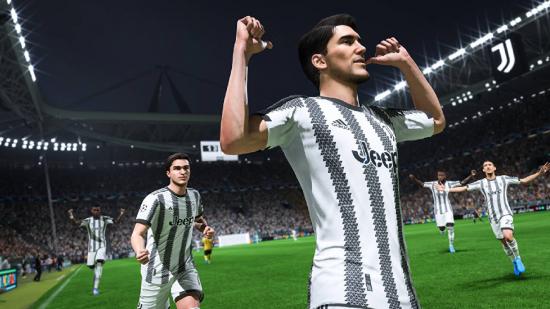EA has made some big changes to FUT 23’s chemistry system in order to shake up Ultimate Team. But, how exactly does it work? Well this FIFA 23 chemistry changes explained guide should have you covered.
While FIFA 23’s ratings will determine who the best players are in FUT 23, it’s always important to factor chemistry into your squad. FIFA 23 scraps the old chemistry system in favour of one that will give you a lot more freedom when it comes to squad building and bad chemistry will no longer negatively impact the performance of your players.
So, for more details on the FIFA 23 chemistry changes in Ultimate Team, read on.
FIFA 23 chemistry Explained
Here’s how FIFA 23 chemistry has changed when it comes to Ultimate Team. The key changes to the system are:
- The negative impact to Attributes caused by low chemistry has been completely removed – players will always play with at least their item’s base Attributes, with Chemistry being additive
- Overall Squad chemistry has been removed, so you only need to focus on building the maximum chemistry for each player
- Position links have been completely removed and your players can now add chemistry to anyone in your starting 11, no matter their position on the pitch
- The Loyalty system has been removed
These changes were made to achieve EA’s goals for the FUT 23, according to the pitch notes. Those core goals included increasing squad variety and allowing for a wider range of player selections which would result in more diverse team compositions.
EA also wanted more intuitive mechanics to make squad building easier and more authentic and more rewarding.

FIFA 23 Ultimate Team How To Get Chemistry
To get chemistry in FIFA 23 Ultimate Team, you will need to do a number of different things focused on individual players and roles, rather than your team. These include ensuring the following:
- A player in your starting 11 will only be able to gain chemistry when playing in their preferred position.
- A player in your starting 11 contributes to chemistry thresholds for the squad only when they are playing in their preferred position
The chemistry then is applied in increments in the following ways:
- A player in your starting 11, while in their preferred position, will add one increment to their Club, country/region, and league chemistry thresholds
- Extra chemistry points will be added to players’ chemistry thresholds when you add a player to your starting 11 that matches the club, country/region, or league of other players in your starting 11.
- Your manager will contribute one Chemistry increment to all players in the starting 11 that share the country/region or the league of the manager.
As you add more players to your starting 11, more pathways to build and grow chemistry will emerge with more clubs, leagues, and countries or regions. You can then make those decisions on how an individual’s chemistry grows using one of those categories.
Trade offs will also be inevitable as you swap players out or make choices when it comes to players on your starting 11.
In addition, as negative impacts on attributes have been removed when players are on low or no chemistry, choosing to play with players not at maximum chemistry will still give you the full attribute of that player. This should remove one of the major downsides and create more flexible teams and choices within FUT 23.
And there you have all the FIFA 23 chemistry changes in Ultimate Team so you can fully to get to grips with how FUT 23 chemistry works. For more on FIFA 23, check out the latest FIFA 23 ratings and our overview of the best FIFA 23 formations and custom tactics for Ultimate Team.
